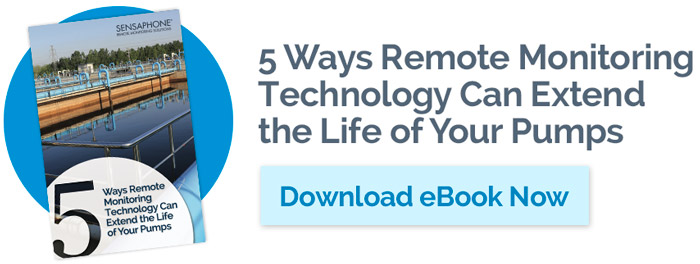Ohio Water Equipment Company of Plain City, Ohio (OWEC) provides water plant operator services to facilities throughout Ohio, including several of the largest travel center operations in the United States. The rest-stop facilities are open and operating 24-hours-a-day, 7-days-a-week.
The Challenge – Complex and Critical Monitoring Needs
Monitoring these and other facilities is costly and complicated, requiring the OWEC to provide the daily measurement information required by the Ohio Environmental Protection Agency (EPA) for variables such as:
- flow rate
- total gallons per day
- free and total chlorine levels
- pressure
- wet floor sensing
All of OWEC’s water plants, for example, must maintain at least 20 psi water pressure at all times, and chlorine residuals must be at least 0.2 mg/1 free and/or 1.0 mg/1 combined. To monitor these critical conditions, the Ohio EPA required a minimum of five (5) site visits per week by an EPA-certified water plant operator. This daily monitoring became time-consuming and costly; OWEC sought a more efficient solution by investigating plant monitoring systems.
The Solution – A Flexible and Streamlined Monitoring System
During the original evaluation process, OWEC compared literature, specifications, and prices for various plant–monitoring systems. Of the products considered, SCADA systems appeared most effective, but most SCADA systems provided more features than OWEC required for most of its applications. However, Sensaphone offered a flexible monitoring system that allowed OWEC to choose just the features it needed without forcing the company to purchase extra features it didn’t need—or want.
The Sensaphone product line comprises around-the-clock alarm auto dialing systems for the remote monitoring of water plants, labs, and other facilities. Operators in the water, wastewater, and environmental remediation industries use Sensaphone equipment to monitor water and wastewater treatment and management, pumping stations, operating equipment, labs, and office facilities. When environmental conditions in these facilities deviate from optimal, users are notified immediately via the units’ alarm and auto dialing capabilities. Immediate, remote notification helps minimize contamination, overflow, disruption, and costly repairs. Best of all, Sensaphone users can phone into their system at any time, from anywhere to access data reports on all monitored conditions.
“We evaluated other systems, but given the price, quality, and specific features of the Sensaphone product line, the choice was obvious,” explained Ron Jordan, President of OWEC. “Based on the results of a six-month field test, we determined that the Sensaphone equipment was extremely reliable, user-friendly, and a valuable addition to our overall plant operation.
Sensaphone - A 24-Hour, Cost-Efficient Monitoring System
Using Sensaphone equipment, the company overcame its primary challenge—meeting Ohio EPA daily measurement requirements—with a cost-effective, efficient solution. Now, the company is only required to visit a site one to two times per week versus the previous situation, which required five visits per week. This saves the customer money while providing greater water-system reliability. “With Sensaphone, the end-user benefits from a more reliable system, which allows for the identification of potential problems before they become emergencies,” Jordan added.
The company also appreciates the Sensaphone’s data monitoring/logging and trend analysis capabilities; one of the key benefits for the OWEC is that the equipment takes a reading every half-hour (instead of once a day), and the system monitors around the clock, 365 days a year, which results in more precise readings. Furthermore, the Ohio EPA was pleased with the performance and accuracy of the Sensaphone monitoring system.
The reduction in onsite staffing and subsequently fewer expenses has proven to be another key benefit for Jordan and his company. “Now we can provide customers with more reliable, trouble-free service, while at the same time decreasing our labor costs,” said Jordan.
Future benefits are already clear. “The federal government has mandated that all private water systems serving more than 25 of the same people in a six-month period will be required to hire the services of a certified water plant operator. The states are required to enforce this mandate and will lose 20% of their EPA funding if they do not,” explained Jordan. “Sensaphone systems will help to ensure compliance with the new federal regulations while offering the end user a way to accomplish this at a considerable cost saving over traditional methods.”

